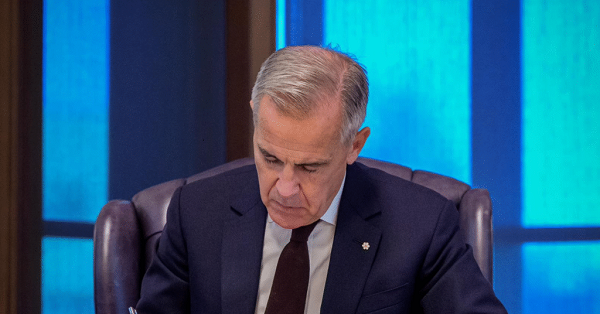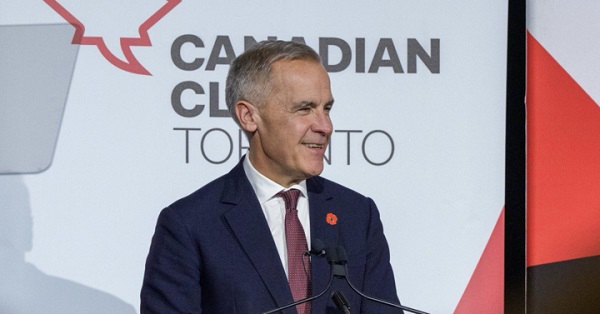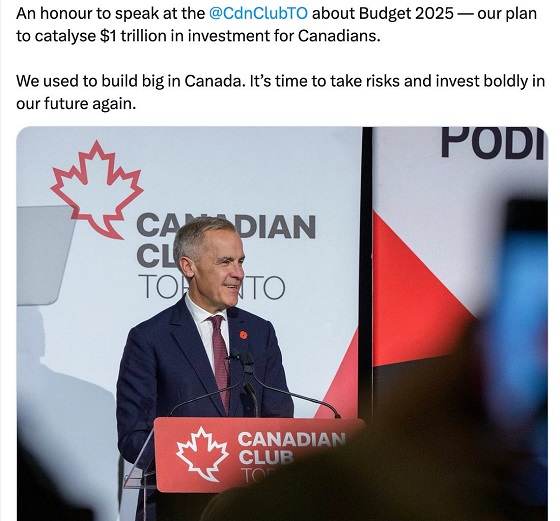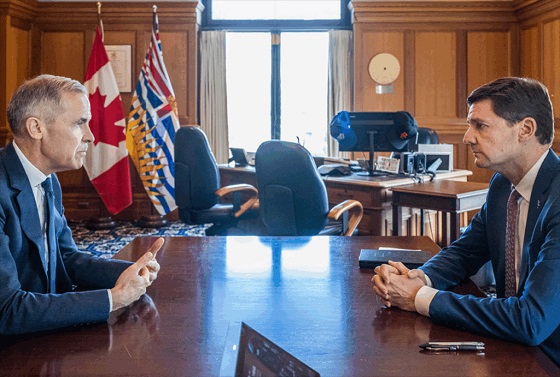Economy
Former socialist economist explains why central planning never works

From the Fraser Institute
Central planning from the inside—an interview with a Soviet-era economist
In our descriptions of socialism in Poland and Estonia, we often quoted firsthand accounts of Poles and Estonians who lived through the period. These were workers, consumers, victims of oppression and resistance fighters. One voice that we didn’t capture was that of the planner—the government official charged with making the economy work, despite socialism’s enormous handicaps.
To better understand that perspective, I recently interviewed Gia Jandieri, an economist who worked for the State Supply Committee in Georgia from 1984 to 1989.
In 1989 Gia cofounded the very first non-governmental organization in Soviet Georgia (the Association of Young Economists) to push for market economic education. And in 2001 he established a think-tank, the New Economic School, to promote economic freedom. The New Economic School has been a full member of the Economic Freedom Network since 2004.
Here’s our discussion (lightly edited for readability):
Matthew Mitchell (MM):
How did you become an economist and a Soviet planner?
Gia Jandieri (GM):
It was accidental. In 1984 my mother worked at the Gossnab (the State Supply Committee for the Central Planning Authority) and she offered to introduce me to her boss. At that time I was only 23 years old and had graduated from the Georgian Polytechnical Institute. My knowledge of economics was mostly from life and family experience (my parents worked at a metallurgical plant).
But as a student in 1979 I had had what I thought were a few strange discussions with a teacher of political economy. Like most teachers, he was no true believer in socialism (it was hard for anyone to believe at that time). But he was required to teach the propaganda. What surprised me was that he was willing to publicly agree with me about my suspicions that the system was failing and might even collapse. This was rare, and he was taking a risk. But it also inspired me. It is also important to note that he wanted to hide his hesitation about Marxism and the Soviet system and he also wanted me to stop my questions, and/or stop attending his lectures (which was of course not allowed). I recall he told me: “either I report you or someone reports both of us for having prohibited discussions.”
When I finished my university study of engineering, I was already sure I wanted to be an economist. So, when the opportunity arose in 1984 to work at the State Supply Committee, I seized it.
MM:
Tell us a little bit about the job of a planner. What were your responsibilities? And how did you go about doing them?
GJ:
Our department inside of Gossnab was responsible for monitoring the execution of agreements for production of goods and government orders. My task was to verify that the plans had been executed correctly, to find failures and problems, and to report to the higher authorities.
This included reading lots of reports and visiting the factories and their warehouses for auditing.
The Soviet economy had been in a troublesome condition since the 1970s. We (at the Gossnab) had plenty of information about failures, but it wasn’t useful. We knew that the quality of produced goods was very low, that any household good that was of usable quality was in deficit, and that the shortages encouraged people to buy on the black market through bribes.
In reality, a bribe was a substitute for a market-determined price; people were interested in paying more than the official price for the goods they valued, and the bribe was a way for them to indicate that they valued it more than others.
The process of planning was long. The government had to study demand, find resources and production capacities, create long-run production and supply plans, compare these to political priorities, and get approval for general plans at the Communist Party meetings. Then the general plans needed to be converted to practical production and supply plans, with figures about resources, finances, material and labour, particular producers, particular suppliers, transportation capacities, etc. After this, we began the process of connecting factories and suppliers to one another, organizing transportation, arranging warehousing, and lining up retail shops.
The final stage of the planning process was to send the participating parties their own particular plans and supply contracts. These were obligatory government orders. Those who refused to follow them or failed to fulfill them properly were punished. The production factories had no right or resources to produce any other goods or services than those described in the supply contracts and production plans they received from the authorities. Funny enough, though, government officials could demand that they produce more goods than what was indicated in the plans.
MM:
What made your job difficult? Let’s assume that a socialist planner is 100 per cent committed to the cause; all he or she wants to do is serve the state and the people. What makes it difficult to do that?
GJ:
There were several difficulties. We had to find appropriate consumer data and compare it to the data of suppliers (of production goods mostly). I was working with several (5-15) factories per year. I needed to have current and immediate information, but the state companies were always trying to hide or falsify their reports. In some cases, waste and theft could be so significant that production had to be halted.
The planners invested vast sums of money and time in data collection and each had special units of data processing.
This was a technical exercise and had nothing to do with efficiency or usefulness. The collected data was outdated by the time it was printed. The planning, approval, and execution processes could take many years to complete, and by the time plans were ready, demand had usually changed, creating deficits of what was demanded and surpluses of what was not demanded. The planners, no matter how dedicated or intelligent they might be, simply couldn’t meet the demands of the customers.
Central planning was not an easy exercise. The central planners needed to understand what was needed—both production supplies and consumer goods. But, of course, we had no way of knowing what people truly wanted because there was no market. Consumers weren’t free to choose from different suppliers and new suppliers weren’t free to enter the market to offer new or slightly different goods.
One of the more helpful ways to find out what people wanted was to look at what consumers in the West wanted since they actually had economic freedom and their demands were quickly satisfied. The government also did a lot of industrial spying to steal Western production ways and technologies.
MM:
Were most of the planners you encountered 100 per cent committed to the cause? Were they incentivized to serve the cause?
GJ:
Some of the staffers were dedicated to their work. Others were mostly thinking about how they could obtain bribes from the production factories as a reward for closing their eyes to mismanagement and failure. The planners were also involved in more significant corruption to allow the production factories to have extra materials and financial resources so they could produce for the black market or so they could simply steal.
Then the revenue from these bribes would be divided among all personnel from different agencies (like the Price Committee, Auditing (“Public Control”), and several other agencies charged with inspections). So, in fact, the system generated corruption as a substitute for official incentives. If anything was still operating, this was mostly due to these corrupt incentives and not in spite of them.
The planning system was quite complex and involved many governmental offices though the main decisions were made by the Communist Party. Planning authorities would report to the Party leadership what they thought would be possible to produce and Party leaders would inevitably demand higher quantities.
Gosplan was bureaucratic to its core, both in principle and character. Nobody was allowed to innovate other than planned/artificial innovation. Everyone had to work only by decrees and orders coming from the political leadership. The political orders and bribes were the only engines that were moving anything. Market incentives didn’t exist. Bonuses (premia) were awarded according to bureaucratic rules, and, paradoxically, these destroyed the motivation of the genuinely hard workers.
MM:
Moving beyond economics a bit, how did the socialist system affect other aspects of life? Culture, families, relationships, civil institutions?
GJ:
One of the examples is Western pop-music. Soviet propaganda tried to hide Western culture. Music schools mostly taught Russian classical music and some folk music of various Soviet ethnic nationalities, but it was mostly Russian.
Jazz and hard rock were not prohibited but very much limited. That of course encouraged smuggling and illegal dissemination, as in every sector. Soviet music factories were buying some rights to the music (for instance the Beatles, Louis Armstrong and Ella Fitzgerald). But these recordings were only available in limited quantities and were of bad quality in order to limit their influence.
Small illegal outfits would make unofficial and illegal copies of any popular western music (not classical).
Cultural institutions like theatre or cinema were harshly censored and mostly served the propaganda machine. The people involved in these sectors did what all producers of goods did. They needed to lobby their benefactors in the bureaucracy, bribing and currying favour with them in different ways. It was said that only one out of four films produced would be shown in the cinemas. The other three films were only produced so studios could steal the resources and obtain higher reimbursements.
Before Soviet rule, Georgia was a property rights and ethics-based society. We have ancient proverbs that testify to this. The Soviets killed the ethical leaders, the property-owning elite, and confiscated their property. The stolen property was supposed to be held in common. In fact, the bureaucracy took it.
State ownership of property opened the way to waste and theft of construction and production materials, office inventory, fertilizer, harvested agricultural products, etc.
In Georgia, one bright spot was underground education. Georgians succeeded in growing a network of informal tutors who effectively operated despite very harsh efforts by the authorities to quash them. These skillful teachers prepared the young people for university exams. This was so widespread that some successful young people (including my wife and friends, for instance) started offering private (completely illegal) teaching services when they were university students.
MM:
To this day, socialism remains alluring to many in the West, especially young people. What do you have to say to the 46 per cent of Canadians aged 18-34 who support socialism?
GJ:
Very simply, it is a mistake to think socialism fails because of the wrong managers. This mistake allows people to think that it’ll work the next time it is tried, if we just have better people. In fact the opposite is true—socialism invites the wrong managers. It doesn’t reward a great manager who tries to improve the system but a person who can adapt to and accept the corruption, waste and theft. Socialism also encourages corruption. When more resources are in the control of politicians and the bureaucracy, there is more favouritism, privilege, and discrimination. Jobs and business opportunities are based on privilege rather than market competition. This means naïve people will always be cheated by brazen liars and manipulators.
Poor people are told that the state is under their control but in fact the bureaucracy and political hierarchy control everything.
In socialism, nature and natural resources are abused and wasted. The Tragedy of the Commons runs rampant without private property, voluntary cooperation, and ethics. The government tries to manage everything centrally and totally fails because it lacks dynamic information, competitive discipline, and proper incentives.
Business
Liberal’s green spending putting Canada on a road to ruin

Once upon a time, Canadians were known for our prudence and good sense to such an extent that even our Liberal Party wore the mantle of fiscal responsibility.
Whatever else you might want to say about the party in the era of Jean Chrétien and Paul Martin, it recognized the country’s dire financial situation — back when The Wall Street Journal was referring to Canada as “an honorary member of the Third World” — as a national crisis.
And we (remember, I proudly served as Member of Parliament in that party for 18 years) made many hard decisions with an eye towards cutting spending, paying down the debt, and getting the country back on its feet.
Thankfully we succeeded.
Unfortunately, since then the party has been hijacked by a group of reckless leftwing fanatics — Justin Trudeau and his lackeys — who have spent the past several years feeding what we built into the woodchipper.
Mark Carney’s finally released budget is the perfect illustration of that.
The budget is a 400 page monument to deficit delusion that raises spending to $644.4 billion over five years — including $141.4 billion in new spending — while revenues limp to $583.3 billion, yielding a record (non-pandemic) $78.3 billion shortfall, an increase of 116% from last year.
This isn’t policy; it’s plunder. Interest payments alone devour $55.6 billion this year, projected to hit $76.1 billion by 2029-30 — more than the entire defence budget and rising faster than healthcare transfers.
We can’t discount the possibility that this will lead to a downgrade of our credit rating, which will significantly increase the cost of borrowing and of doing business more generally.
Numbers this big start to feel very abstract. But think of it this way: that is your money they’re spending. Ottawa’s wealth is made up entirely of our tax dollars. We’ve entrusted that money to them with the understanding that they will use it responsibly. In the decade these Liberals have been in power, they have betrayed that trust.
They’ve pursued policies which have made life in Canada increasingly unaffordable. For example, at the time of writing it takes 141 Canadian pennies (up from 139 a few days ago) to buy one U.S. dollar, in which all of our commodities are priced. Well, that’s .25 cents per litre of gasoline. Imagine what that’s going to do to the price of heating, of groceries, of the various other commodities which we consume.
And this budget demonstrates that the Carney era will be more of the same.
Of course, the Elbows Up crowd are saying the opposite — that this shows how fiscally responsible Mark Carney is, unlike his predecessor. (Never mind that they also publicly supported everything that Trudeau did when he was in government.) They claim that Carney shows that he’s more open to oil and gas than Trudeau was.
Don’t believe it.
The oil and gas sector does get a half-hearted nod in the budget with, for instance, a conditional pathway to repeal the emissions cap. But those conditions are important. Repeal is tied to the effectiveness of Carney’s beloved industrial carbon tax. If that newly super-charged carbon tax, which continues to make our lives more expensive, leads to government-set emissions reductions benchmarks being met, then Ottawa might — might — scrap the emissions.
Meanwhile, the budget doubles down on the Trudeau government’s methane emissions regulations. It merely loosens the provisions of the outrageous Bill C-59, an act which should have been scrapped in its entirety. And it leaves in place the Trudeaupian “green” super structure, which has resource sector investment, and any business that can manage it, fleeing to the U.S.
In these perilous times, with Canada teetering on the brink of recession, a responsible government would be cutting spending and getting out of the way of our most productive sectors, especially oil and gas — the backbone of our economy.
It would be repealing the BC tanker ban and Bill C-69, the “no more pipelines act,” so that our natural resources could better generate revenue on the international market and bring down energy rates at home.
It would quit wasting millions on Electric Vehicle charging stations; mandating that all Canadians buy EVs, even with their elevated cost; and pressuring automakers to manufacture Electric Vehicles, regardless of demand, and even as they keep closing up shop and heading south.
But in this budget the Liberals are going the opposite direction. Spend more. Tax more. Leave the basic Net-Zero framework in place. Rearrange the deck chairs on the Titanic.
They’re gambling tomorrow’s prosperity on yesterday’s green dogma, And every grocery run, every gas fill-up, every mortgage payment will serve as a daily reminder that we are the ones footing the bill.
Once upon a time, the Liberals knew better. We made the hard decisions and got the country back on its feet. Nowadays, not so much.
Business
Carney doubles down on NET ZERO

If you only listened to the mainstream media, you would think Justin Trudeau’s carbon tax is long gone. But the Liberal government’s latest budget actually doubled down on the industrial carbon tax.
While the consumer carbon tax may be paused, the industrial carbon tax punishes industry for “emitting” pollution. It’s only a matter of time before companies either pass the cost of the carbon tax to consumers or move to a country without a carbon tax.
Dan McTeague explains how Prime Minister Carney is doubling down on net zero scams.
-

 espionage2 days ago
espionage2 days agoChinese-Owned Trailer Park Beside U.S. Stealth Bomber Base Linked to Alleged Vancouver Repression Case
-

 Daily Caller2 days ago
Daily Caller2 days agoUS Nuclear Bomber Fleet Shares Fence With Trailer Park Linked To Chinese Intel-Tied Fraudster
-

 Daily Caller2 days ago
Daily Caller2 days agoLaura Ingraham Presses Trump On Allowing Flood Of Chinese Students Into US
-

 Crime17 hours ago
Crime17 hours agoCBSA Bust Uncovers Mexican Cartel Network in Montreal High-Rise, Moving Hundreds Across Canada-U.S. Border
-

 Business2 days ago
Business2 days agoCarney’s Floor-Crossing Campaign. A Media-Staged Bid for Majority Rule That Erodes Democracy While Beijing Hovers
-

 Environment18 hours ago
Environment18 hours agoThe Myths We’re Told About Climate Change | Michael Shellenberger
-

 Energy1 day ago
Energy1 day agoIt should not take a crisis for Canada to develop the resources that make people and communities thrive.
-

 Dr John Campbell1 day ago
Dr John Campbell1 day agoCures for Cancer? A new study shows incredible results from cheap generic drug Fenbendazole







